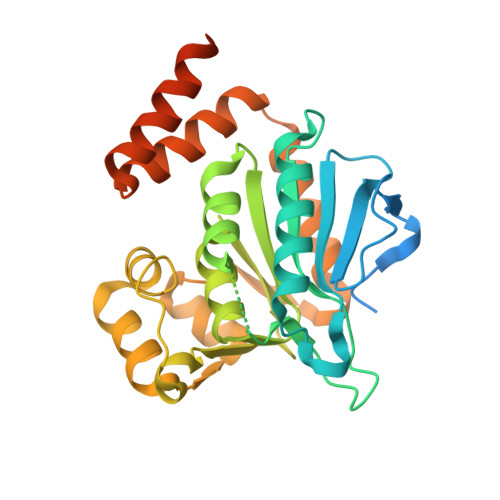Structure of naphthoate synthase (MenB) from Mycobacterium tuberculosis in both native and product-bound forms.
Johnston, J.M., Arcus, V.L., Baker, E.N.(2005) Acta Crystallogr D Biol Crystallogr 61: 1199-1206
- PubMed: 16131752
- DOI: https://doi.org/10.1107/S0907444905017531
- Primary Citation of Related Structures:
1RJM, 1RJN - PubMed Abstract:
Mycobacterium tuberculosis, the cause of tuberculosis, is one of the most devastating human pathogens. New drugs for its control are urgently needed. Menaquinone, also known as vitamin K, is an essential cofactor that is required for electron transfer and the enzymes that synthesize it are therefore potential drug targets. The enzyme naphthoate synthase (MenB) from M. tuberculosis has been expressed in Escherichia coli, purified and crystallized both as the native enzyme and in complex with naphthoyl-CoA. Both structures have been determined by X-ray crystallography: native MenB at 2.15 A resolution (R = 0.203, R(free) = 0.231) and its napthoyl-CoA complex at 2.30 A resolution (R = 0.197, R(free) = 0.225). The protein structure, which has a fold characteristic of the crotonase family of enzymes, is notable for the presence of several highly flexible regions around the active site. The bound naphthoyl-CoA is only visible for one of the three molecules in the asymmetric unit and only partly rigidifies the structure. The C-terminal region of the protein is seen to play a critical role both in completion of the binding pocket and in stabilization of the hexamer, suggesting a link between oligomerization and catalytic activity.
Organizational Affiliation:
School of Biological Sciences, University of Auckland, Private Bag 92019, Auckland, New Zealand.















